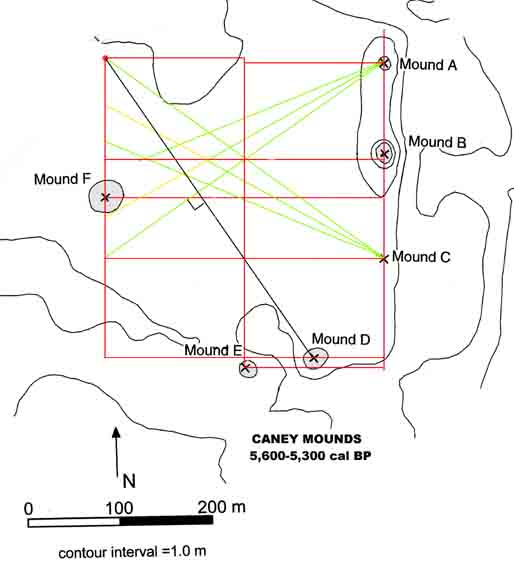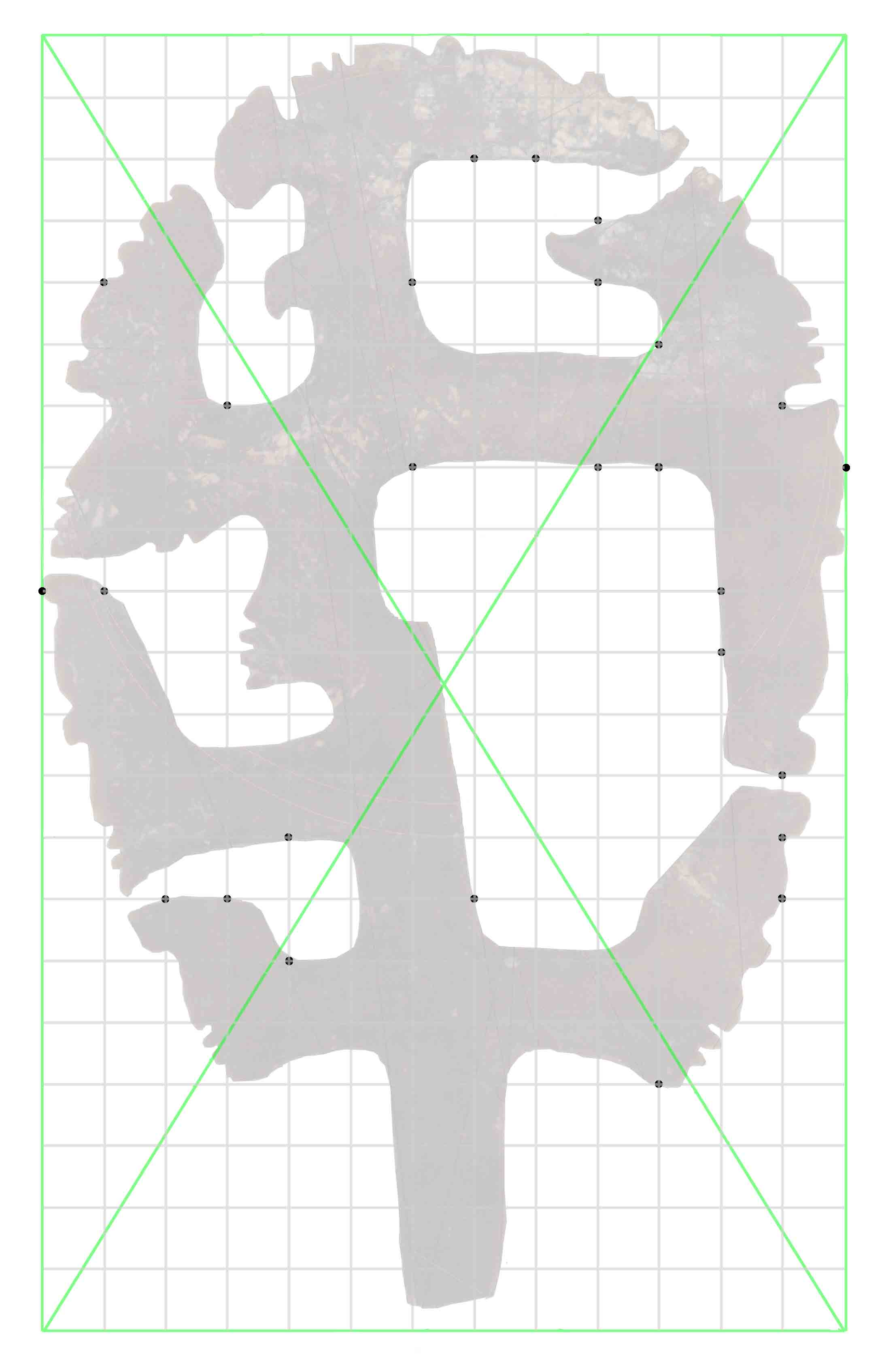Hierophany
Mircea Eliade described hierophany as a revelation of the sacred in an object or event of the otherwise profane world. At the latitude of Izapa, where the noon passage of the sun casts no shadow divides the year into parts that divide the year into parts that are 260 and 105 days long. That the otherwise coincidental phenomenon was viewed with special regard is made obvious by vertical zenithal observation tubes, and monumented alignments to points on the horizon where the sun will rise on those special days. Suggestions that such phenomena inspired the counting of time are logical, but are confounded when similar coincidences are recognized elsewhere and else-when.
The oldest hierophany appears to occur in Northern Louisiana during the Archaic period. In this case, ideal geometric relationships were generated and replicated at several groups of mounds. Preservation of the graphic representation over thousands of years demonstrates that the concept of spiritual revelation imparts cultural stability. Astronomical events are transitory day-by-day, cyclic for each planet, dependable, and meaningful in regard to seasons.
A variety of graphic mnemonics preserve messages by an artificial hierophany that employs standard units of measure to indicate numerical values. Some examples contain multiple messages, often redundantly.
Caney mounds in northern Louisiana

Combining cardinal directions with bearings to solar and lunar extrema on the horizon produces a graphic mnemonic that can be registered to mound location at various other sites. The green and yellow lines are astronomical sightings, while the red lines are cardinal directions. At the time of building, Mound A was 260 units north and 365 units east of the intersection west of mound B. Precession of true North has changed the bearings that can be observed today.
“Heavenly rectangle,” used throughout Mesoamerica

Rather than using a mathematically correct golden rectangle, the Maya guided their geometry with a thirteen by twenty-one unit grid. In this case, the effigy was designed to coincide with grid nodes twenty-six times. Descriptions of the path of creation in the Book of Chilam Balam of Chumayel can be explained as steps traced along the tile pattern.
